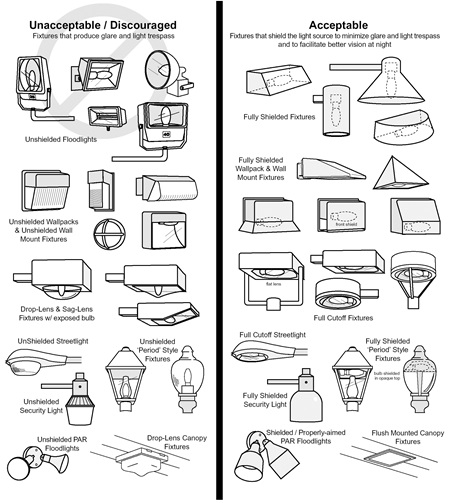It depends on the site conditions. Any property owner can choose to comply with the following Prescriptive Standard. The lighting levels listed under each site conditions are maximum limits and property owners can choose to use lower levels.
Facing the Street – A light fixture can be fully, partially or not shielded and can be mounted up to 12’ above the surface to be illuminated. Example of this site condition is a front yard. The maximum lumen limit for new and replacement light fixtures and light bulbs is 630 lumens.
Lighting Entrances, Walkways & Open Spaces - A light fixture must be fully shielded and can be mounted up to 12’ above the surface to be illuminated. Examples of this site condition are light fixtures next to doorways, paths, outdoor stairs or open spaces that need a focused, brighter light. The maximum lumen limit for new and replacement light fixtures and light bulbs is 1,050 lumens.
General Locations anywhere along the Property – A light fixture in this general condition can be fully, partially or not shielded and can be mounted up to 12’ above the surface to be illuminated. Examples of this site condition are lights placed around the property for safety and security or general use. The maximum lumen limit for new and replacement light fixtures and light bulbs is 315 lumens.
Parking Areas & Driveways – A light fixture must be fully shielded and can be mounted up to 14’ above the surface to be illuminated. Examples of this site condition are driveways, garages, parking spaces, parking lots, and loading bays that need a focused, brighter light. The maximum lumen limit for new and replacement light fixtures and light bulbs is 1,260 lumens.
This illustration, courtesy of Bob Crelin and the New England Light Pollution Advisory Group, shows examples of unshielded or partially shielded light fixtures, which are restricted in certain conditions listed above, and fully shielded light fixtures, which are allowed under all site conditions.
